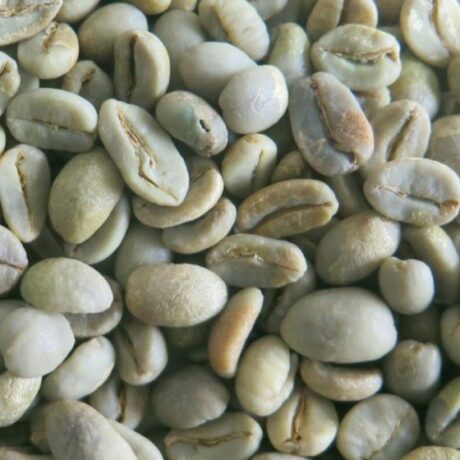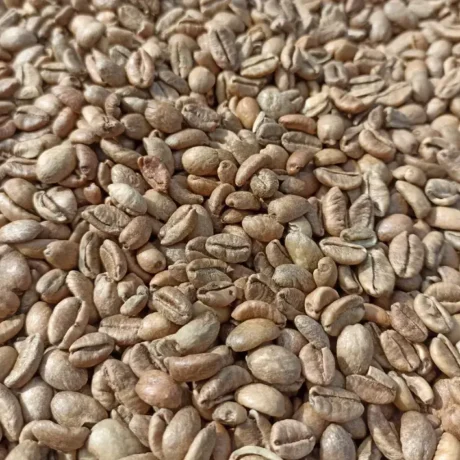We’ve all been there. You pour a splash of creamy soy milk into your freshly brewed coffee, expecting a harmonious blend, only to witness a disheartening sight: your once-smooth beverage transforms into a lumpy, unappetizing mess. What exactly causes this frustrating phenomenon, often referred to as “curdling” or phase separation? And more importantly, can we prevent it? This isn’t just about a spoiled morning ritual; it’s a fascinating scientific puzzle involving the delicate balance of ingredients in your cup. Understanding why
soy milk curdles in coffee can help you enjoy your plant-based lattes without the worry of an unwelcome surprise.
The Heart of the Matter: What’s Happening When Soy Milk Curdles in Coffee?
At its core, when soy milk curdles in coffee, it’s undergoing a process called phase separation. Think of it like oil and water trying to mix – they simply don’t. In the case of soy milk and coffee, the proteins in the soy milk are reacting to the conditions of the coffee, causing them to clump together and separate from the liquid. This can make the coffee look unappealing, much like spoiled dairy milk.
Soy milk itself is a complex mixture, a hydrocolloid containing proteins, lipids, minerals, and other components. The main proteins, glycinin (11S) and
β-conglycinin (7S), make up about 70% of the total soy protein. These proteins are sensitive to their environment, and changes in factors like temperature and pH can significantly influence their behavior.
The Culprits: Temperature, Acidity, and Concentration When Soy Milk Curdles
Research has delved into the specific conditions that trigger this curdling effect. It turns out, a few key factors are at play, contributing to why soy milk curdles in coffee:
Temperature is a Major Player
Ever noticed your soy latte curdles more often when the coffee is piping hot? There’s a scientific reason for that. Studies show a clear relationship between temperature and curdling. Generally, higher temperatures lead to phase separation. The phase diagram for soy milk in coffee reveals a “two-phase region” at higher temperature from a “single-phase region” at low temperature. This means that if your coffee is too hot, you’re more likely to see those unwelcome clumps forming.
Acidity (pH) Also Has a Say
Coffee is naturally acidic. The pH of your coffee can also influence whether your soy milk curdles in coffee. While pH differences in these mixtures are small, two-phase mixtures (the curdled ones) generally have a lower pH than single phase. This suggests that a more acidic coffee might be more prone to causing curdling.
Soy Milk Concentration Matters
The amount of soy milk you add to your coffee can also affect its stability. Interestingly, mixtures were homogeneous at low concentrations (around 2%), then phase separated at intermediate concentrations, and became homogeneous again at high soy milk concentrations, depending on temperature. This creates a delicate balance, where finding the “sweet spot” in terms of concentration can help prevent soy milk curdles in coffee.
Can We Reverse the Curdling? The Reversibility Factor
Here’s a surprising and hopeful bit of news: the curdling of soy milk in coffee is often a reversible phase transformation. This means it’s not an irreversible change due to protein denaturation, for example.
How can you reverse it?
- Cooling the mixture: Mixtures in a two-phase state at high temperature were cooled (maintaining fixed composition) and at low enough temperature (and after stirring) became homogeneous.
- Increasing soy milk concentration: Increasing soy milk concentration in mixtures at constant temperature with a coffee concentration of 0.0125 g coffee/g water was tested, and it was observed that the mixture became homogeneous again at high soy milk concentrations.
This reversibility is a fascinating aspect and could even be exploited in food product engineering.
The Science Behind the Scenes: Understanding Why Soy Milk Curdles
The way soy milk separates in coffee is complex, involving processes that scientists are still fully understanding. One theory suggests it aligns with “spinodal decomposition” models, which describe how a mixture separates into two phases. This is supported by observations like the exponential growth of peak intensity over time, and the power law dependence of the characteristic growth time on the quench depth, with an exponent close to 2, consistent with spinodal models.
However, the picture isn’t entirely straightforward. Such early time spinodal separation is usually expected to rapidly transition to a growing characteristic scale as regions of the two phases coarsen to larger scale. Alternative explanations for separation displaying a constant characteristic scale include gelation or formation of a ‘cluster phase’. There’s also some evidence, particularly for the shallowest quenches into the two-phase region, i.e., near the phase boundaries, of a decrease in characteristic scale at the earliest stages, which may indicate a nucleation mechanism.
Practical Tips for a Curdle-Free Coffee Experience When Using Soy Milk
So, what does all this science mean for your daily cup? Here are some practical takeaways to prevent your soy milk curdling in coffee:
- Mind the Temperature: Let your coffee cool slightly before adding soy milk. Very hot coffee is more likely to cause curdling.
- Choose Wisely: Some brands of soy milk are less prone to curdling in coffee. These often contain acidity regulators and stabilizers, such as monopotassium phosphate and gellan gum. Checking the ingredient list might save you some trouble!
- Experiment with Concentration: If you find your coffee consistently curdles, try adjusting the amount of soy milk you use. You might find a sweet spot that keeps your drink smooth.
- Consider the Coffee: Different coffee types have different acidity levels. Explore various roasts and brewing methods (like https://specialtycoffee.id/articles/brewing-time-pour-over-coffee/ or https://specialtycoffee.id/articles/the-art-of-french-press-coffee-ratio/) to see how they interact with your soy milk.
The world of coffee is vast and fascinating, from exploring the best beans for pour-over https://specialtycoffee.id/articles/brewing-noob-here-are-the-best-coffee-beans-for-pour-over/ to understanding the effects of coffee on health https://specialtycoffee.id/articles/effects-of-coffee-on-health-and-addiction/. Even a seemingly simple issue like
soy milk curdles in coffee reveals a complex interplay of physics and chemistry. The ongoing research into plant-based alternatives like soy, almond, and oat milk promises exciting developments for the food and drink industry.
What are your go-to tips for preventing soy milk from curdling in your coffee? Share your experiences and help fellow coffee lovers enjoy their perfect cup!
Source : “Curdling” of soymilk in coffee: A study of the phase behaviour of soymilk coffee mixtures





